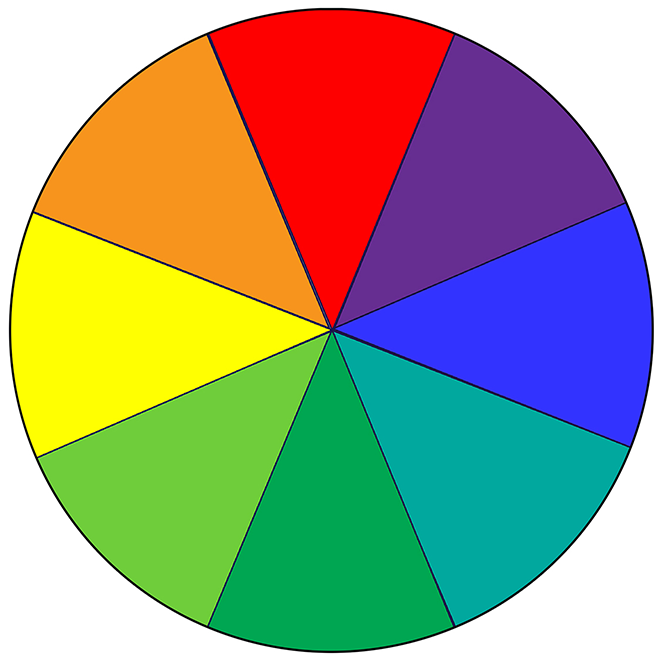|
The Opponent Color Wheel |
Marcy Petrini
June, 2025
I have been thinking about color a lot lately, as I get ready to go to the Intermountain Weavers’ Conference where I will be teaching a seminar on color and a workshop on designing twills which, of course, includes color.
It’s fairly recently in my weaving journey that I have come to really understand what causes the various effects we see in our weaving and it all comes down to the way our eyes and brain are integrated to see.
For starters, I use the opponent color wheel:

This is not the latest scientific discovery; it was Ewald Hering who described the opponent system in 1874 – no, that’s not a typo, it was 1874!
We can see all of the colors in our world from the opponent system:
Red ↔ Green
Blue ↔ Yellow
Light ↔ Dark
Our brain detects how red or green a color is, as well as how blue or yellow it is, and it sums up the output of the other two spectra to determine light through dark.
That is why there is a reddish blue -- purple -- but not reddish-green or blueish-yellow. And we see pink because, while it is a red, there is a smaller output to the light-dark continuum.
What’s remarkable about this opponent system is that, given any color, we can determine its opponent by using an after-image.
Think of another nervous system, temperature: if you put your hand in very hot water and you keep your hand there, soon the water won’t feel hot anymore because the system has gotten “tired.” That’s what happens when staring at a color for some 20 seconds, the brain gets tired, and you see the opponent color when you look away.
It does take some practice to obtain a good after-image, and we must follow directions. Here they are, using a yarn:
1. Place the yarn whose after-image you want to detect on a white surface; a sheet of paper is fine.
2. Place another sheet of paper with a black dot in the middle.
3. Stare at a single point on the yarn for 20 seconds without moving your eyes and without blinking.
4. Move your eyes to the black dot on the white sheet of paper; again, no blinking or moving your eyes. Watch the after-image evolve over several seconds.
It’s important not to move your eyes, or blink, otherwise the brain resets and no after-image can appear.
Try it! You will be surprised that the after-image of red is not always green, because the reds may have other colors. I like to use the after-image to help me decide what weft to use once I choose a warp.
Happy Weaving!
Marcy
